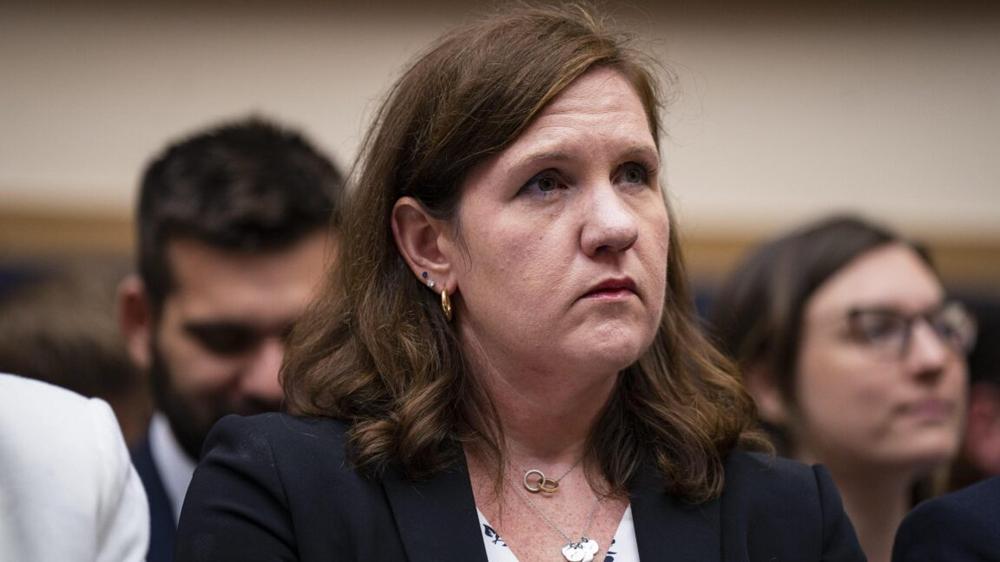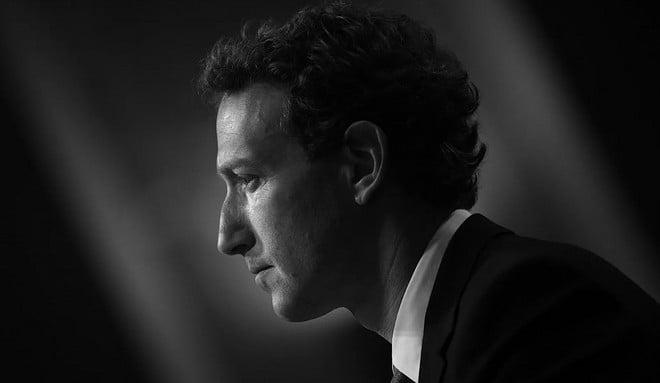A federal judge ruled yesterday that President Trump violated US law when he fired Democrat Rebecca Kelly Slaughter from her position at the Federal Trade Commission.
"Because the law on the removal of FTC Commissioners is clear, and for the reasons explained below, the court will grant Ms. Slaughter's motion for summary judgment and deny Defendants' cross-motion for summary judgment," said the memorandum opinion from Judge Loren AliKhan in US District Court for the District of Columbia.
Trump is appealing the ruling to the DC Circuit court of appeals and yesterday asked the District Court to stay its order while the appeal is pending. The case could end up at the Supreme Court, with the Trump administration seeking to overturn a 1935 precedent that AliKhan cited while ruling in Slaughter's favor.
"This court has no illusions about where this case's journey leads," AliKhan wrote. "But for the time being, Defendants' attempt to remove Ms. Slaughter from her position as an FTC Commissioner did not comply with the FTC Act's removal protections. Because those protections remain constitutional, as they have for almost a century, Ms. Slaughter's purported removal was unlawful and without legal effect."
AliKhan noted that the District Court "may not enjoin the President directly" but said she would issue "a declaratory judgment that the President's purported removal of Ms. Slaughter was invalid and that she is a rightful Commissioner of the FTC." An accompanying order said that FTC Chairman Andrew Ferguson and other agency officials may not "interfer[e] with Ms. Slaughter's right to perform her lawful duties as an FTC Commissioner until the expiration of her term or unless she is lawfully removed by the President for 'inefficiency, neglect of duty, or malfeasance in office.'"
Slaughter posted that she was heading back into the office on Friday morning.
Supreme Court precedent
Trump fired Slaughter along with Commissioner Alvaro Bedoya in March, leaving the FTC with only Republican commissioners. Slaughter and Bedoya sued Trump, saying their removals were "in direct violation of a century of federal law and Supreme Court precedent."
Bedoya subsequently resigned from the FTC, saying he needed to look for other employment and was legally unable to unless he formally resigned. Bedoya argued that he was still entitled to relief in court, but AliKhan agreed with Trump that Bedoya's claims are now moot and must be dismissed. Slaughter did not resign and thus still had standing to pursue the case.
Trump's termination notices sent to Slaughter and Bedoya said, "Your continued service on the FTC is inconsistent with my Administration's priorities. Accordingly, I am removing you from office pursuant to my authority under Article II of the Constitution."
US law says any FTC commissioner "may be removed by the President for inefficiency, neglect of duty, or malfeasance in office." The Supreme Court held in a 1935 case, Humphrey's Executor v. United States, that "Congress intended to restrict the power of removal to one or more of those causes."
Humphrey's Executor involved President Franklin D. Roosevelt's firing of FTC Commissioner William Humphrey. AliKhan's ruling noted that in the unanimous Humphrey's Executor opinion, the Supreme Court "sided with Commissioner Humphrey and held that the FTC Act's removal protections for FTC Commissioners did not violate Article II."
While Trump declared in February that agencies like the FTC may no longer operate independently of the White House, AliKhan pointed out that the 1935 Supreme Court ruling made clear that Congress had the power to create agencies that operate "independently of executive control."
"Without removal protections, that independence would be jeopardized... Accordingly, the Court held that the FTC Act's for-cause removal protections were constitutional," wrote AliKhan, who was appointed to the District Court by President Biden in 2023.
Judge: Facts almost identical to 1935 case
The Supreme Court reaffirmed its Humphrey's Executor findings in cases decided in 2010 and 2020, AliKhan wrote. "Humphrey's Executor remains good law today. Over the span of ninety years, the Supreme Court has declined to revisit or overrule it," she wrote. Congress has likewise not disturbed FTC commissioners' removal protection, and "thirteen Presidents have acquiesced to its vitality," she wrote.
AliKhan said the still-binding precedent clearly supports Slaughter's case against Trump. "The answer to the key substantive question in this case—whether a unanimous Supreme Court decision about the FTC Act's removal protections applies to a suit about the FTC Act's removal protections—seems patently obvious," AliKhan wrote. "In arguing for a different result, Defendants ask this court to ignore the letter of Humphrey's Executor and embrace the critiques from its detractors."
The 1935 case and the present case are similar in multiple ways, the judge wrote. "Humphrey's Executor involved the exact same provision of the FTC Act that Ms. Slaughter seeks to enforce here: the for-cause removal protection within 15 U.S.C. § 41 prohibiting any termination except for 'inefficiency, neglect of duty, or malfeasance in office,'" she wrote.
The "facts almost identically mirror those of Humphrey's Executor," she continued. In both Roosevelt's removal of Humphrey and Trump's removal of Slaughter, the president cited disagreements in priorities and "did not purport to base the removal on inefficiency, neglect of duty, or malfeasance."
Trump and fellow defendants assert that the current FTC is much different from the 1935 version of the body, saying it now "exercises significant executive power." That includes investigating and prosecuting violations of federal law, administratively adjudicating claims itself, and issuing rules and regulations to prevent unfair business practices.
But AliKhan said this argument fails because "the FTC possessed each of these powers from the moment it was created and well before the Supreme Court decided Humphrey's Executor." She rejected the Trump administration's argument that the FTC exercises new abilities, saying these "are outgrowths of its original powers, rather than dramatic transformations of the 'character of the office.'"
Judge “unsure” about impact of new SCOTUS ruling
AliKhan acknowledged that the Supreme Court recently stayed District Court decisions in similar cases involving Trump's removal of National Labor Relations Board Member Gwynne Wilcox and Merit System Protects Board Member Cathy Harris.
"Defendants urge this court to read the tea leaves of Wilcox and Harris as further support for their position that this court can and should jettison Humphrey's Executor. But the Supreme Court's stay order is not a decision on the merits. The Court expressly left the pivotal legal questions 'for resolution after full briefing and argument,'" AliKhan wrote. "And even taking the Court's pronouncements at face value, its order only addressed removal protections as they pertain to the NLRB and MSPB."
AliKhan "is unsure of what to make of the Court's one-sentence pronouncement in a four-paragraph grant of a stay application," writing that the "order does not cite any substantive case law to support its brief statement on irreparable harm or the balance of the equities... Because the Supreme Court explicitly reserved judgment on the legal questions until the litigation can run its course, this court will not upend its own analysis on the basis of a procedural order that fails to address Humphrey's Executor or the FTC."
While AliKhan also acknowledged "that the Supreme Court has questioned aspects of the Humphrey's Executor decision," she wrote that "whether or not the Supreme Court has lost faith in its ninety-year-old holding is not a decision for this court to make."

 Stellantis raddoppia la produzione in Marocco: da qui arriveranno i nuovi modelli Mild Hybrid
Stellantis raddoppia la produzione in Marocco: da qui arriveranno i nuovi modelli Mild Hybrid